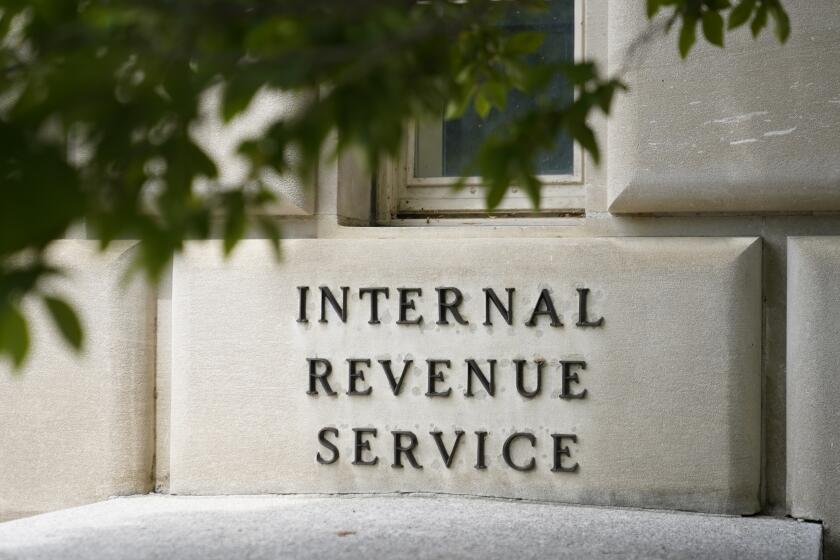These Trying Times : Job Security Evaporates as Economic Ripple Effect Hits Home : Until the turnaround comes, however, the South Bay will continue to feel the recession in several areas: Aerospace
- Share via
At South Bay aerospace plants, the employment curve of late has looked disturbingly like the flight path of a ballistic missile.
After ascending through the mid-1980s, local aerospace employment has turned sharply earthward, mainly because of cutbacks in defense spending. Since aerospace is one of the South Bay’s largest industries, its rough ride is producing an economic ripple effect that experts expect to last for years.
“It’s already starting to impact subcontractors and feeder businesses like metal-working companies, even paper supply companies,” said MaryAnn Pranke of the Carson-Lomita-Torrance Private Industry Council, a federally funded job-training service. “Somehow it seems that almost every company in this area is related to aerospace in one way or another.”
Nearly all the major aerospace contractors with plants in the South Bay have experienced sizable employment declines in the past year, interviews with officials from the companies reveal.
Using layoffs and attrition, for instance, McDonnell Douglas cut the work force at its Torrance plant from 5,717 in March, 1990, to 4,130 this March. In the same period, Rockwell slashed employment at its El Segundo aircraft unit from 2,580 to 1,866--down from 8,732 in September, 1984. To generate more savings, Rockwell also plans to shift its 300-employee headquarters from leased offices in El Segundo to a company-owned facility in Seal Beach.
TRW, meanwhile, trimmed its South Bay payroll from 16,700 workers in March, 1990, to 15,105 this March. And in the same 12-month period, Northrop cut its local employment from 17,833 to 14,819.
Last week, Northrop announced it will eliminate 1,000 more jobs by the end of the year because the company failed to win the $72-billion competition for the advanced tactical fighter. Six hundred workers are expected to be laid off. The other cuts will come through attrition. Most of the positions are expected to be taken from Northrop’s El Segundo and Hawthorne facilities.
Although Hughes says its South Bay work force has remained at 26,000 for more than a year, the company eliminated 5,000 area jobs in 1989.
“It’s going to be another tough year if we don’t see some improvement right away,” warns Ralph Wortmann of Allied Signal, an aerospace subcontractor that let go more than 300 employees in the past year.
If any consolation can be found in the grim statistics it is that the situation could be worse.
Hughes on Oct. 30 announced it had decided against moving its 1,200-employee Electron Dynamics Division from Torrance. And a lobbying drive led by local business people has apparently prompted the Air Force to shelve a proposal to relocate its Space Systems Division, a 3,200-employee unit in El Segundo that oversees procurement of high-tech military space hardware.
Some executives predict the South Bay’s aerospace picture will eventually improve as companies in the industry place less emphasis on defense work and more on commercial projects.
Hughes, for instance, says it is trying to adapt defense products to the automotive industry, among them digital windscreen displays and collision-avoidance radar. McDonnell Douglas, meanwhile, says it has a backlog of 168 commercial airplanes on firm order and is betting on steady growth in the airline industry.
But commercial business is no panacea. The technology and skills South Bay aerospace companies have developed for the Pentagon are not easily translated into commercial needs. In some cases, executives acknowledge, aerospace’s fortune will continue to ride on the defense budget.
Said Northrop spokesman Ron Owens: “Nobody wants to have a stealthy commercial airliner.”
Times staff writers Gerald Faris, Shawn Hubler, Deborah Schoch and Tim Waters contributed to this story.
More to Read
Inside the business of entertainment
The Wide Shot brings you news, analysis and insights on everything from streaming wars to production — and what it all means for the future.
You may occasionally receive promotional content from the Los Angeles Times.










